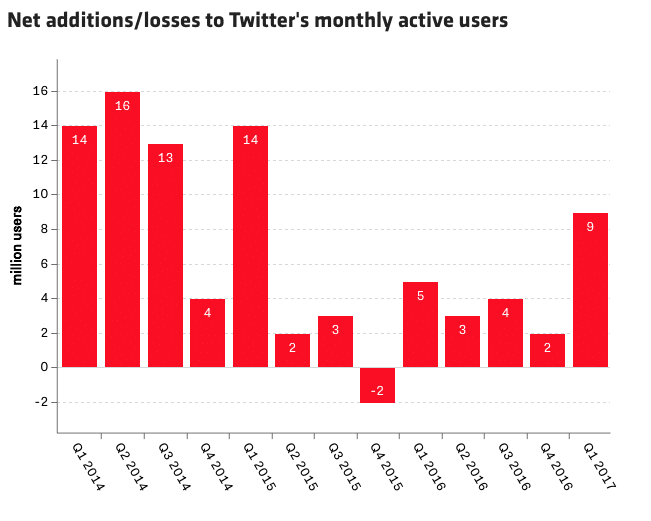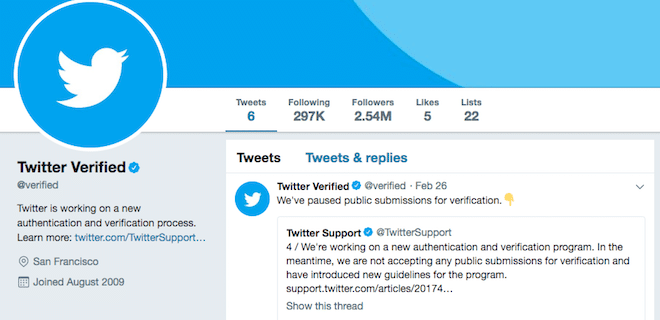It seems like just yesterday that Twitter announced a process for requesting Twitter handle verification. And just as quickly as it came, it is already gone.
Quietly–and seemingly in the dark of night–Twitter revoked the ability to request that your account be verified with a simple tweet:
https://twitter.com/verified/status/968243242184491008
Why on earth would they take away the little hope we had of eventually becoming verified? Well, I have a couple theories. But first it requires a little background information. And also, not all is lost. Stay tuned until the end to learn about what may be coming.
Where was Twitter in 2016?
Twitter originally opened the verification process via a public form at an interesting time in its history. They were experiencing stagnant daily users and declining new users. It was clear the company was on the offensive–throughout 2015 and 2016 the company tried many things to appeal to current and new users including expanding the character count, eliminating @usernames and links in the character count, changing the favorite star to a heart and introducing ‘moments’ that allows users to aggregate curated tweets about a specific trending event (and enabled the platform to make their own trending news section).
All of these were welcomed with mixed responses and they disgruntled some long time users who dislike change. And then Twitter opened the verification process. A welcome change that got social media managers everywhere in a tizzy, rushing to get their brands verified. We even talked about the verification process here on the Voxus blog.
So what happened?
For awhile, all was good. It didn’t appear that any of these significant changes had a negative impact on the social platform’s performance. And then there was something that sparked significant growth for Twitter–the election of our current president. As a public figure using the social media platform to share exclusive updates on policy, opinion or just “covfefe,” users flocked to the platform leading to a dramatic growth in monthly active users — which also happens to be a key statistic evaluated by shareholders and stock markets and often impacts overall share price.
As you can see in this graph from Recode, there was a 350% increase in active twitter users between Q4 of 2016 and Q1 of 2017.

As more people started signing on to the network, it found its every move a little more closely monitored and in the spotlight. And one of its new moves–that previously would have only made a small stir by longtime users–went viral. It soon became clear that there was a misunderstanding over what ‘Twitter Verification’ truly means. Is it tacit endorsement of a celebrity or brand? Or is it simply a means of verifying that an account represents exactly who it says it is and not a fake account attempting to pass as the real thing? It seems like Twitter believes it’s the latter and took down the public Twitter verification process. There were a few too many cases where Twitter provided the blue verification badge to accounts across the political spectrum, at which point many users viewed it as an endorsement or validation rather than simply identity verification.
Where do I go from here?
All is not lost. There is solid evidence that Twitter will continue to work on this process. And what comes of it might not be what you expect. In a March Periscope, CEO Jack Dorsey indicated that verification would eventually be offered to everyone, more simply as a means of identity verification. So it may be coming back but the subsequent verification will not be an exclusive, prized, badge of honor it once did.
So, for now, continue to stay tuned!

